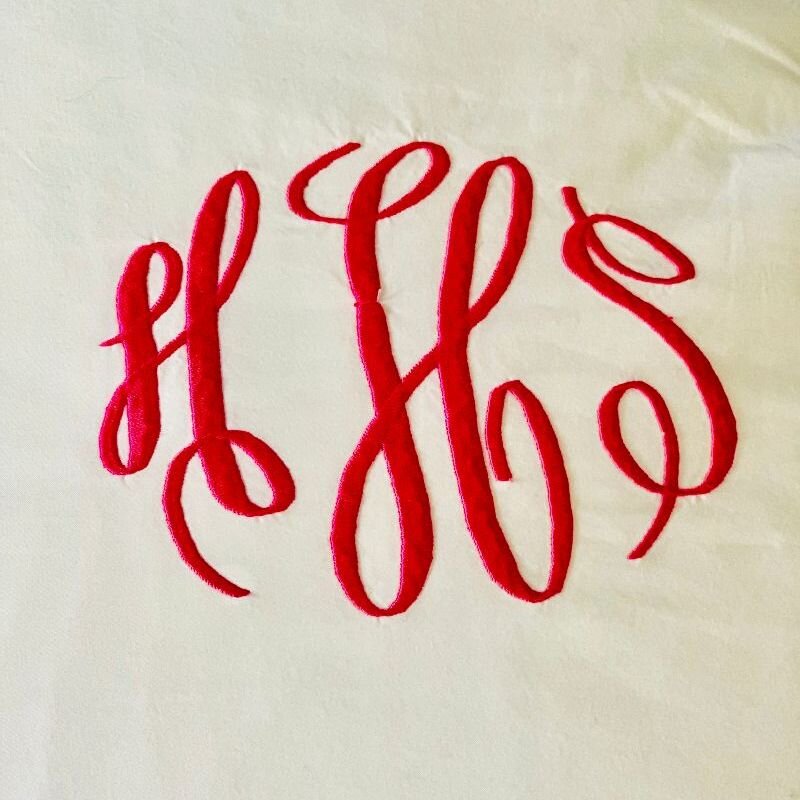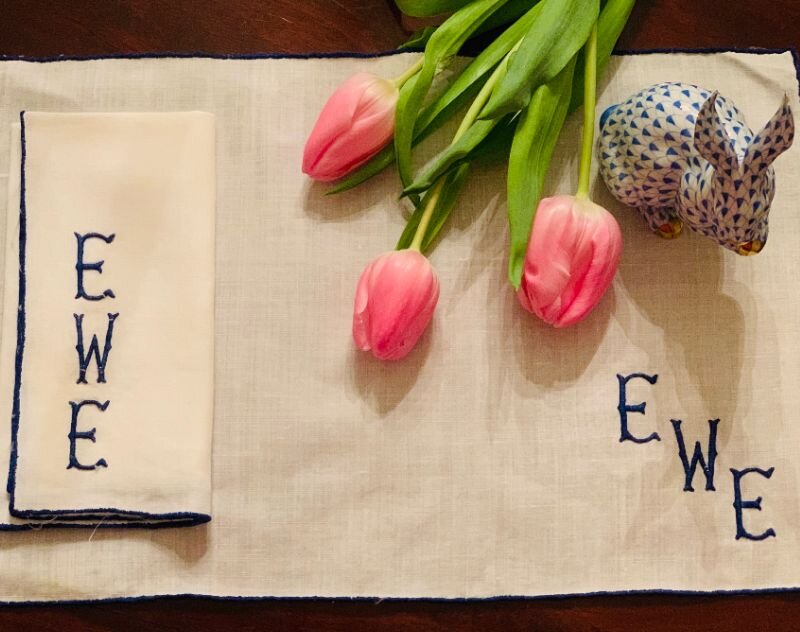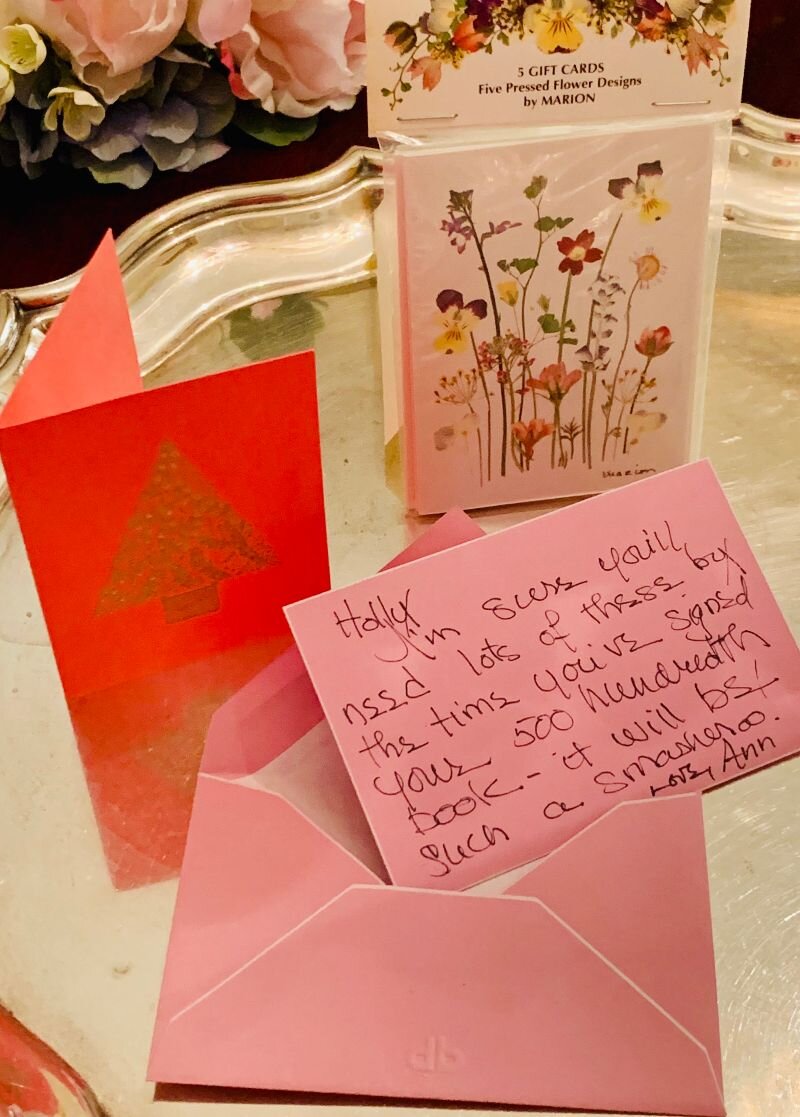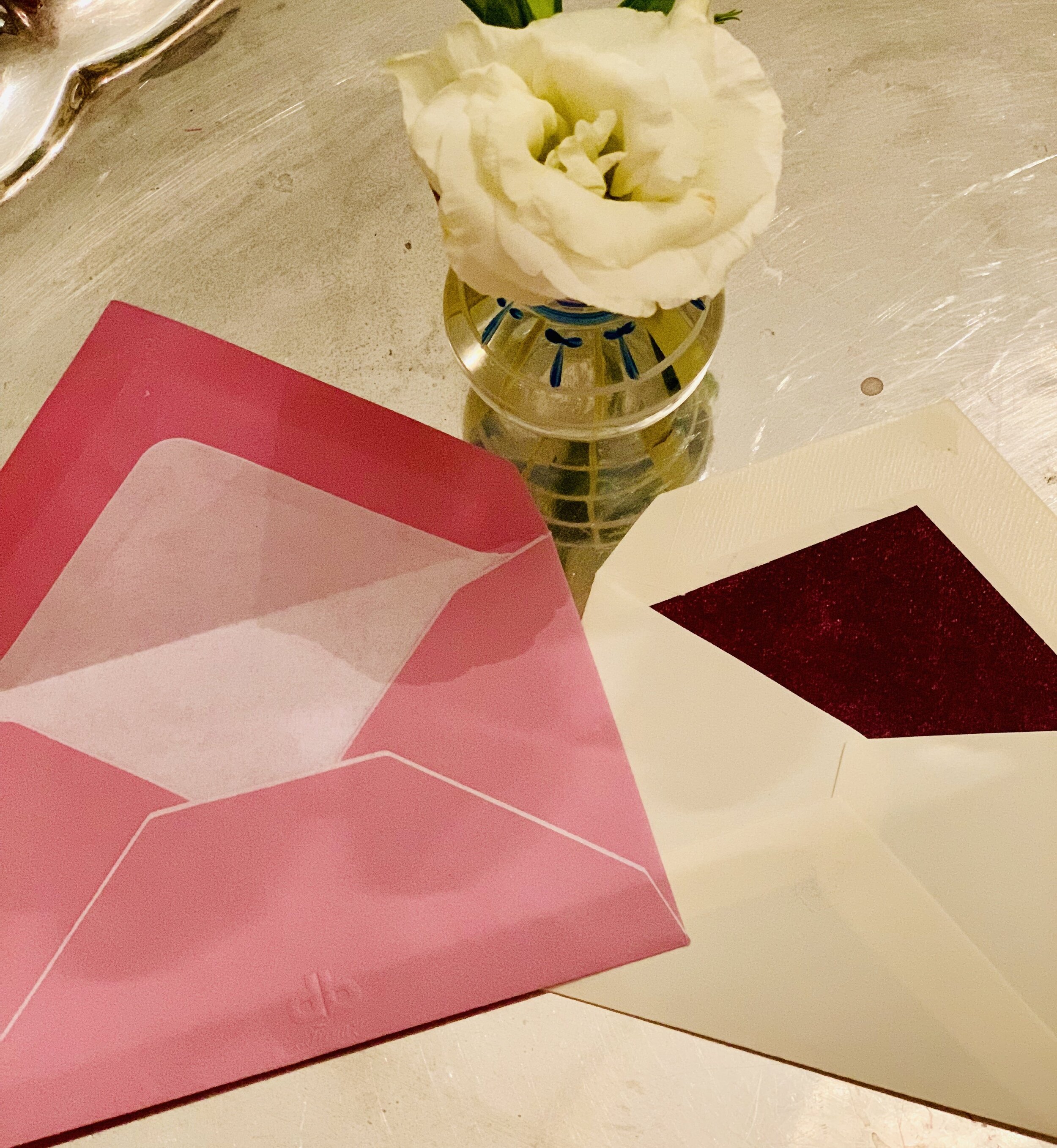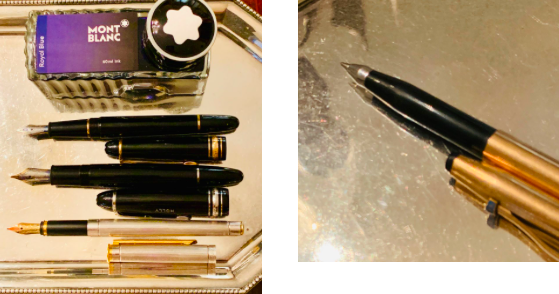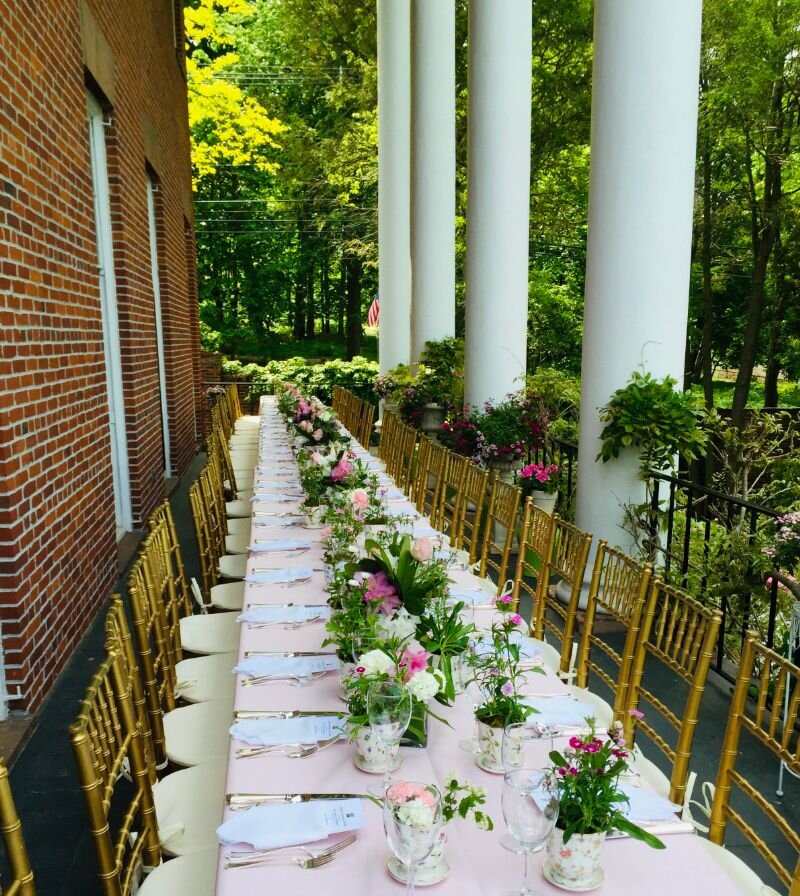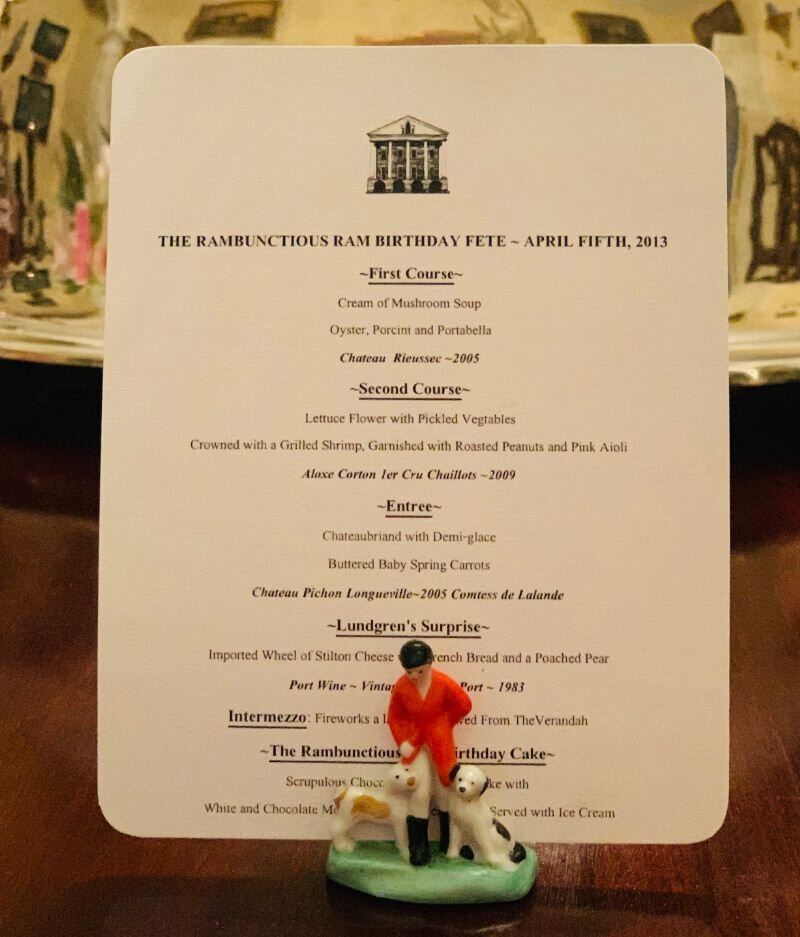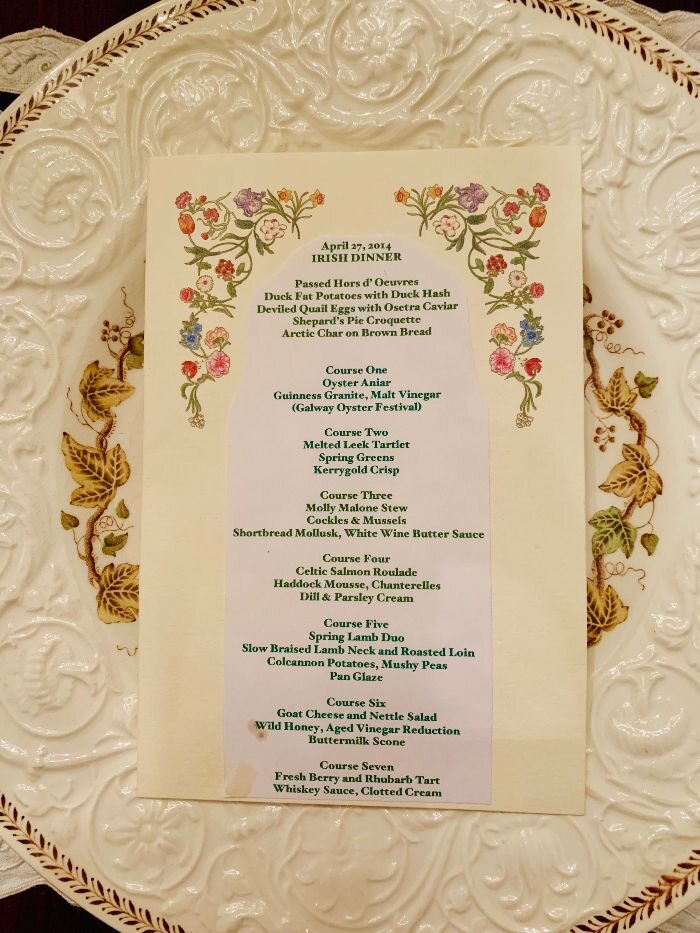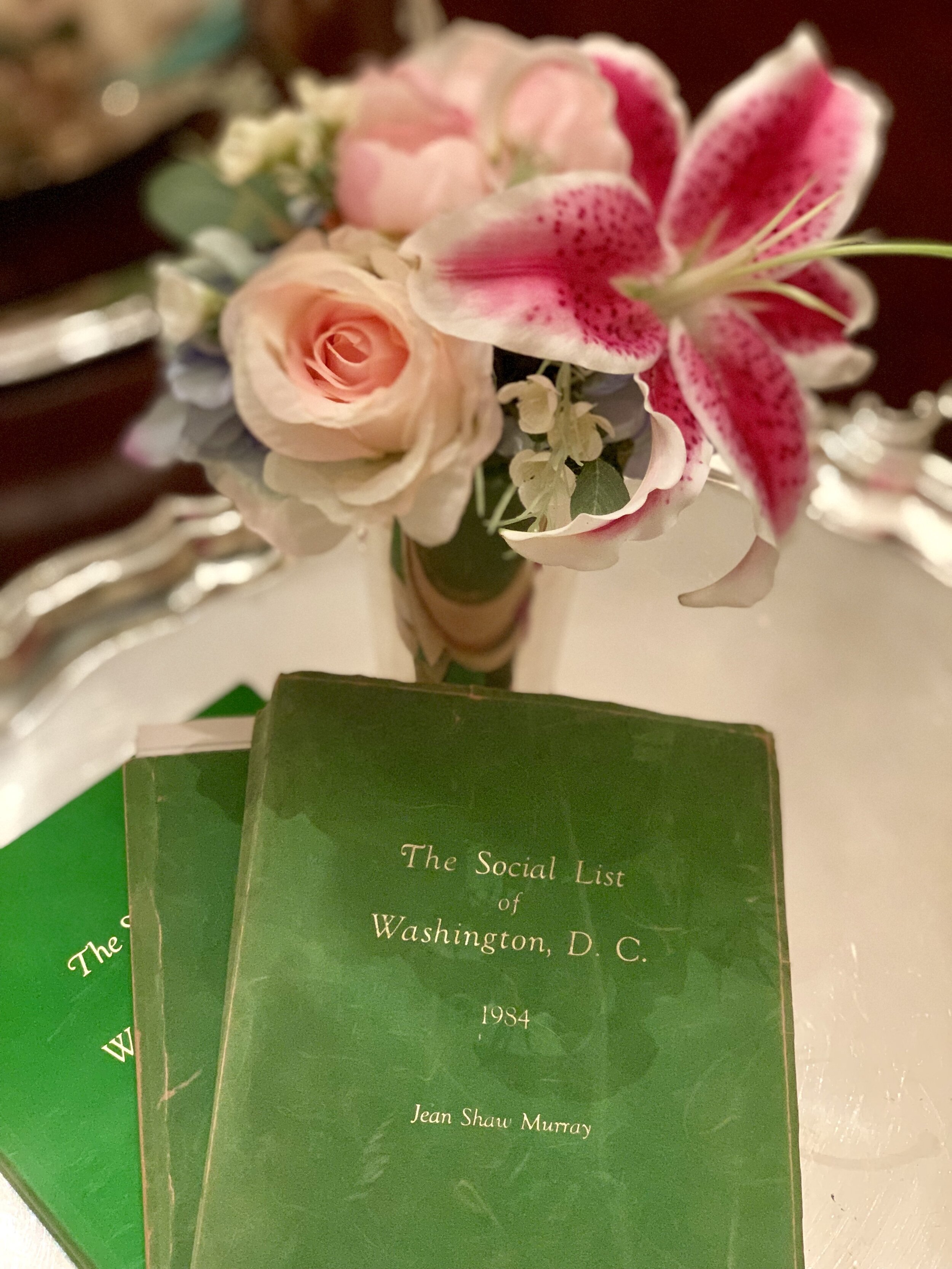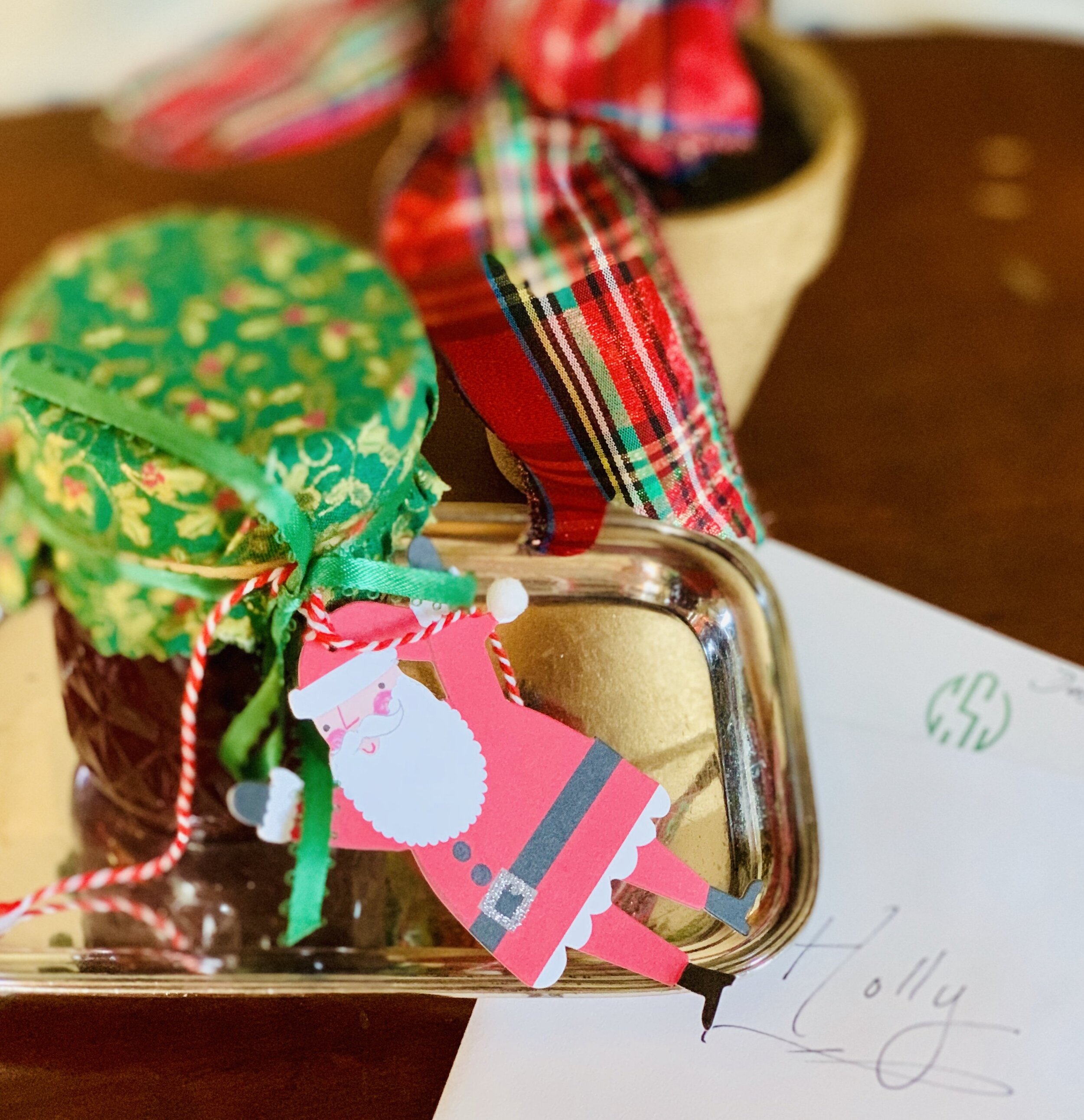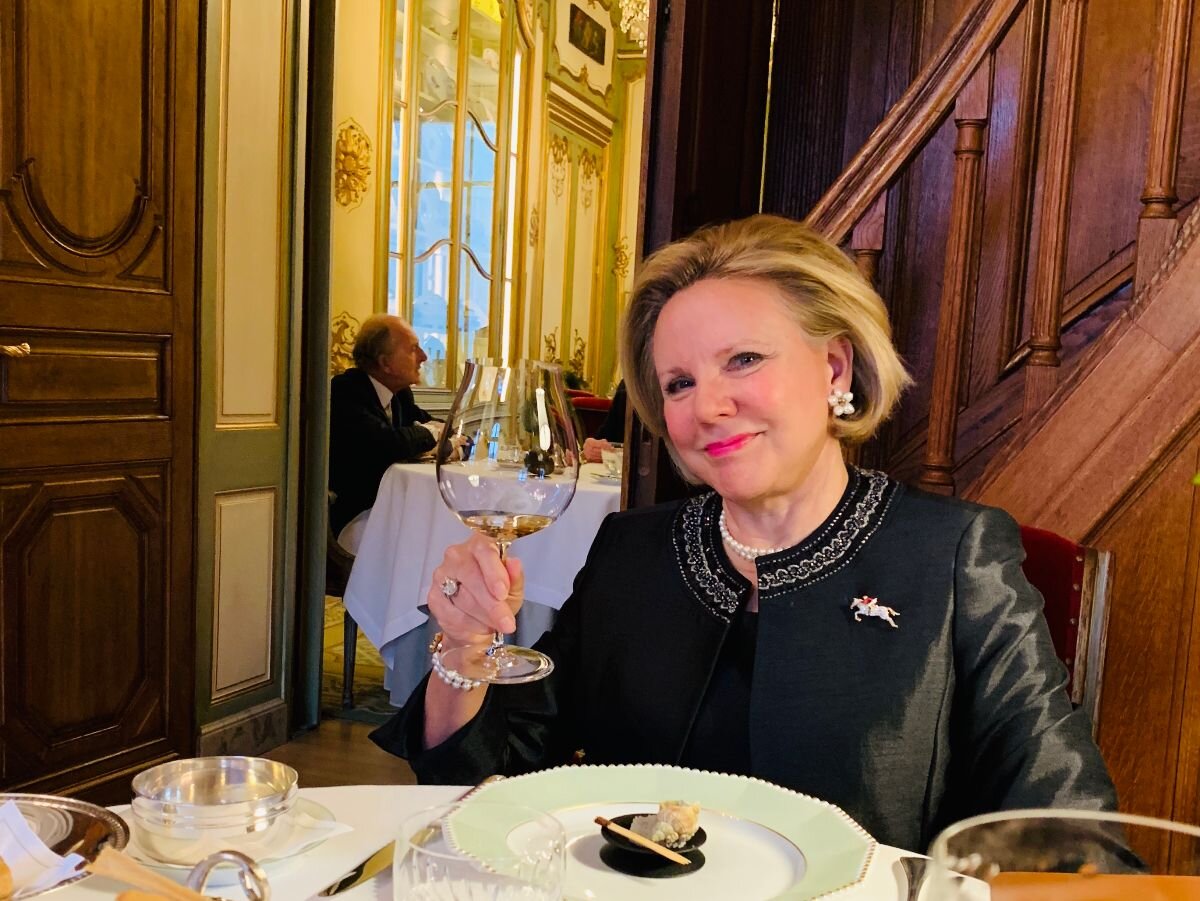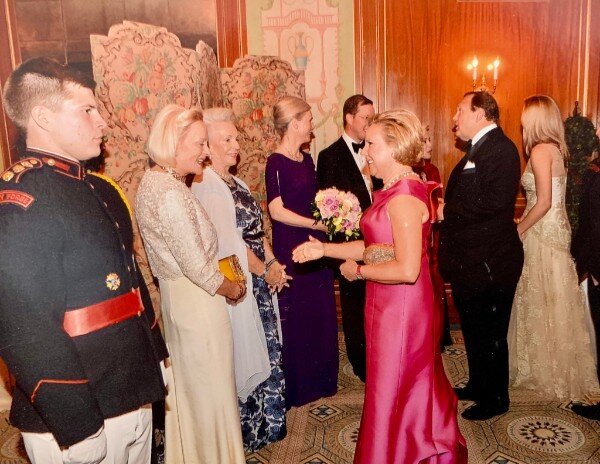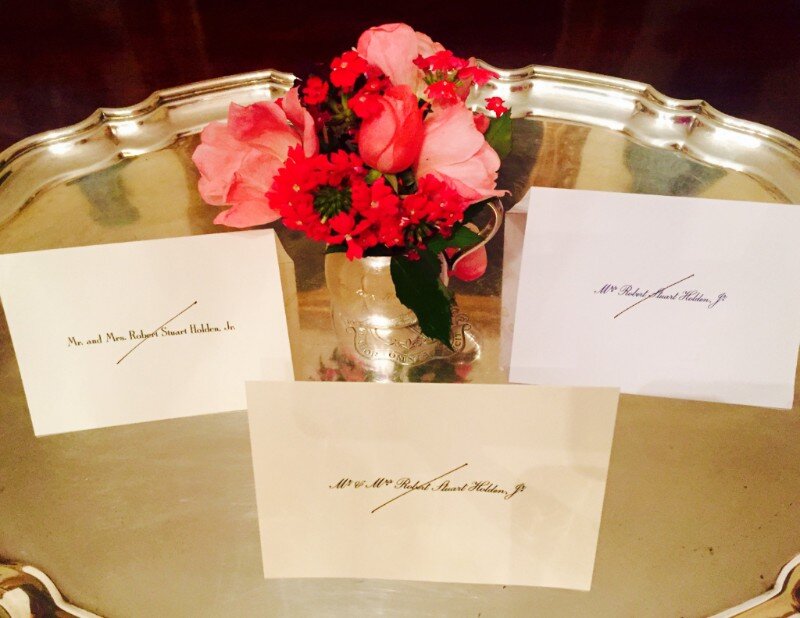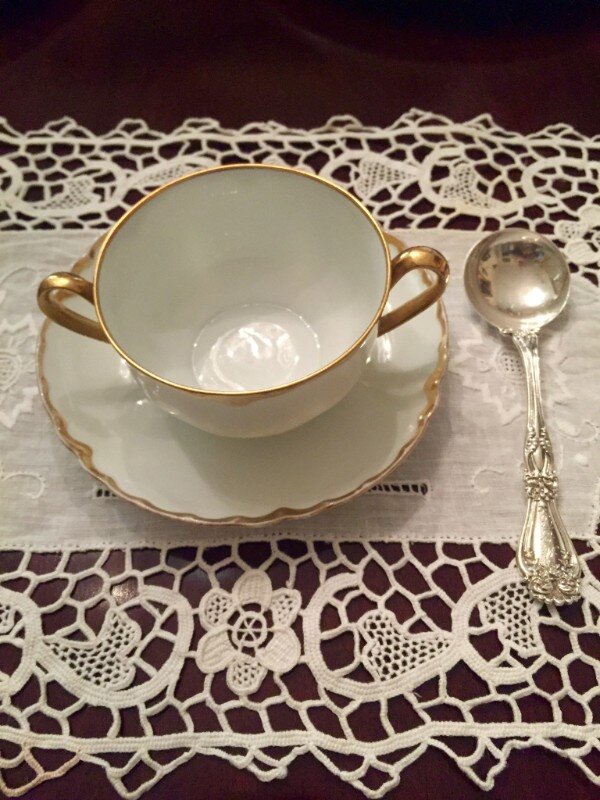As a married couple (for 43 years!) my initial is on the left, our surname larger in the center, and Stuart's initial is on the right.
"If it is not moving, monogram it!" This is how Reese Witherspoon refers to monogramming in her darling book, Whiskey in a Teacup, and it sums up my southern sentiments as well. Monogramming is an essential element in the South for timeless and tailored houses. Towels, sheets, coverlets, shams, without a monogram... well, they just look naked, like a cupcake without frosting! This also goes for silver, writing paper, and photograph frames. The list is endless.
For a married couple, the bride's first initial comes first on the left, the surname of the couple in the center, and the groom's first initial on the right, in that order. This joint monogram is used mainly on items that the couple will use together, such as sheets in their bedroom and towels in their bathroom.
Once married, a woman who has taken on her husband's last name has two choices. Her first name on the left, her married surname in the center, and either her maiden name on the right OR her middle name on the right. I chose the latter. The woman is considered the hostess of the house, so her initials are the ones used for most items in the household. A woman's maiden initials are always appropriate to use, even after she is married.
A monogram for a single woman or single man is as you would imagine, with the first name on left, the last name in the center and the middle name on the right.
If a name has more than three initials, as my father's did with five, then they are written in a straight line, instead of having the last name centered.
Script is quite often the font of choice for women and babies, while a block font is quite handsome for men. The various fonts and styles are endless, making a gift with a monogram so thoughtful and unique.
Mummy chose to have her initials all the same size, in a line, on her linens here. Her first name E, maiden name W, and married name E, is last.
On a little throw blanket in my office, the initials are: left first name, center last name, and my middle name on right.

